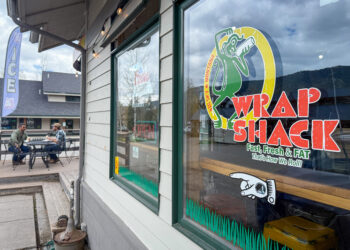By Rick Donaldson
Having my first grandchild born into the world and my life has profoundly changed how I view my conservation efforts. I’ve started thinking more long term and I’ve been searching for what can be done today to ensure that future generations can enjoy the amazing landscapes and river systems that are a part of our lives.
What will our vital sources of clean water, mountain streams, and fish habitat look like for my granddaughter when she’s older and has a family of her own? Is there something, anything at all, that my generation can do today that will protect the places and experiences that we have now for her world and for future generations?
As a volunteer for the Gallatin River Task Force in Big Sky I’ve been involved in various conservation projects to protect and conserve our local rivers and streams. River cleanups, water quality monitoring, and restoration projects have been a large part of this work.
But in most cases, these are reactionary responses to an immediate or evident problem. We see trash along the river and we clean it up. Visual stream bank damage and erosion prompts us to raise resources to repair it. A significant change in water chemistry leads us to find the source, understand the problem, plan a solution and fix it.
While these are all essential projects, work that needs to be done, the problems are already in place and now we are taking action to mitigate them. When it comes to considering my granddaughter’s generation and those after her, I feel that we need to be proactive by looking for solutions to issues that are not in front of us yet.
As I contemplate the challenges in dealing with the projected growth of our region, climate change and potential threats to water quality and quantity, it is evident that we need to employ tools that will keep our watersheds in Montana healthy for centuries to come. This is the legacy that we can choose to leave behind for our children and their children.
As the owners of Gallatin River Guides in Big Sky, my son Mike and I know all too well that we operate in an industry that relies on clean water and healthy wild trout populations. The three-week closure of the upper Yellowstone River in 2016 due to a parasitic outbreak that killed thousands of whitefish serves as big a wakeup call to all my outfitting and guiding peers: We are dealing with fragile freshwater systems.
That is why we are resolute in offering our full support for draft legislation called the Montana Headwaters Security Act, which would protect iconic streams like the upper Gallatin, the upper Madison and the upper Yellowstone on public lands with a Wild and Scenic Rivers designation. The National Wild and Scenic Rivers protection restricts dams and major water resource projects from impacting the free-flowing nature of a river. The act also maintains clean water and protects remarkable values of a river such as recreation opportunities, fisheries, wildlife habitat and scenery.
Gallatin River Guides and the Gallatin River Task Force are part of a broad coalition of landowners, watershed groups, conservationists and sportsmen called Montanans for Healthy Rivers (healthyriversmt.org). Alongside more than 1,000 business owners in Montana, we crafted the Montana Headwaters Security Act to protect our outdoor recreation and downstream agricultural economies, as well as safeguard our Montana way of life.
For granddaughters like mine, and for Montana families young and old, I urge you to call Sens. Tester [(202) 224-2644] and Daines [(202) 224-2651] and Rep. Gianforte [(202) 225-3211] to request they introduce and pass the Montana Headwaters Security Act in the U.S. Congress. Let’s create a legacy of river conservation with the Wild and Scenic Rivers Act.
Rick Donaldson lives near Big Sky, Montana and is the Chairman of the Gallatin River Task Force and a partner with his son Mike in Gallatin River Guides.













